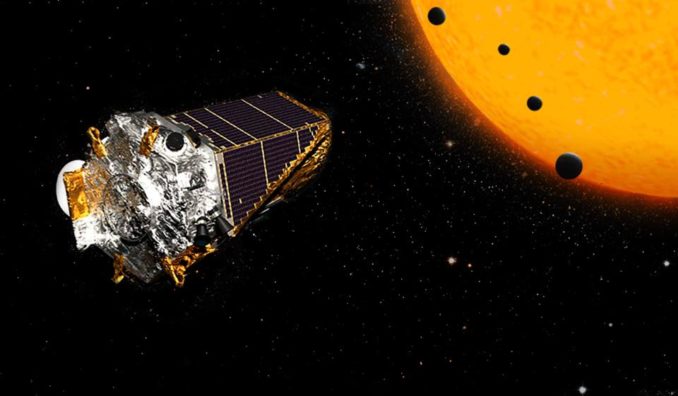
You’re looking at the center of our galactic home, the Milky Way, as imaged by 64 radio telescopes in the South African wilderness.

Nearly a decade after launching NASA’s Kepler telescope has netted 2,650 new confirmed worlds beyond our solar system. It now has paused its observations after on-board sensors detected it is running low on fuel.

A new image of star cluster RCW 38, an area strewn with young, hot, massive stars, is providing an unprecedented glimpse into a tumultuous region of space located 5,500 light-years from Earth.

The James Webb Space Telescope would be the most complex imaging hardware that NASA has attempted to put into space. But so far, that complexity has driven extensive delays.

We’re still a few years away from the final document, but serious proposals are in the planning stages for next generation space telescopes - HabEx, Lynx, Origins Space Telescope and LUVOIR.

The Falcon Telescope Network is spreading across the globe. The telescopes will be able to identify any space debris in orbit around Earth that is larger than 10cm by picking up any sunlight that the space trash reflects.

Transiting Exoplanet Survey Satellite – TESS – has snapped a stunning test photo showing an estimated 200,000 stars cantered on the southern constellation Centaurus.

With the recent launch of TESS and the JWST scheduled to launch by 2020 - a lot of attention has been focused on the next-generation space telescopes that will be taking to space in the coming years.

NASA’s Transiting Exoplanet Survey Satellite (TESS) has launched on the first-of-its-kind mission to find worlds beyond our solar system, including some that could support life.

Set to lift off early next week, the Tess spacecraft will prowl for planets around the closest, brightest stars. These newfound worlds will become prime targets for future telescopes looking to tease out any signs of life.

Top officials said Tuesday that more time is needed to assemble and test the James Webb Space Telescope, which is considered a successor to the long-orbiting Hubble Space Telescope.

The Kepler spacecraft responsible for detecting 2,245 exoplanets, and another 2,342 yet to be confirmed, is running out of fuel and may have just a few months left before its lights go out.

An international team of astronomers has discovered one of the most extreme instances of magnification by gravitational lensing.

Thanks to a new study by a team of Spanish researchers, the oldest star in the Milky Way may have finally been discovered.

The Xinjiang Qitai 110-meter Radio Telescope ( QTT ) could help advance research on dark matter, gravitational waves, and extraterrestrial intelligence.